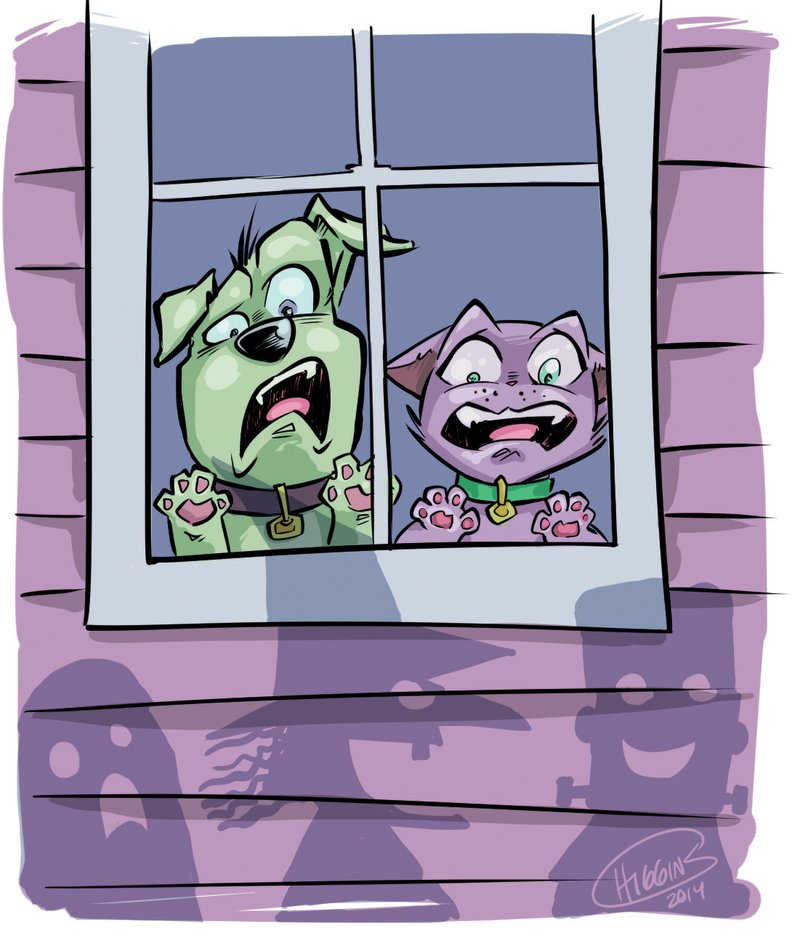As Halloween nears, my mailbox fills up with tips and reminders that the holiday can be a fright night for dogs and cats. Everybody and their dog warns about the hazards of pets getting into the candy stash or being frightened by a constant flow of trick-or-treaters at the door.
Without saying boo, here are few suggestions gleaned from the American Veterinary Medical Association (avma.org), petinsurance.com, petfinder.com and the American Society for the Prevention of Cruelty to Animals (aspca.org).
• Unless a pet has an extremely mellow temperament, the repeated ring of the doorbell, plus the hustle and flow of trick-or-treaters, can be just plain scary. The ASPCA recommends keeping dogs and cats in a room away from the front door during the busiest hours to prevent stress.
Keeping pets away from the flurry of activity also can prevent an anxious pet from darting outside to escape the parade of costumed visitors. But there's always a chance the pet might get out of its room and try to go outside, so it's a good idea to make sure Fido and Fluffy are wearing collars and identification tags (even if they have microchip identification).
• Most people are aware that chocolate -- particularly dark chocolate -- can be toxic to dogs, but they may not know that the artificial sweetener xylitol is even more dangerous. According to petpoisonhotline.com, even small amounts can cause seizures and liver failure. The most common source of xylitol poisoning is sugar-free candy and gum. If a pet consumes any foods containing the sweetener, contact a veterinarian immediately.
• Keep the jack-o'-lantern away from Fido. While canned pumpkin is a safe treat for a dog, raw pumpkin can cause stomach upset with unpleasant results.
• If dressing up a pet, take care that the costume isn't constricting and doesn't have any embellishment that could be a choking hazard for a pet with a tendency to chew. Also, skip putting a mask on a dog or cat. One reason is that the animal probably won't like the mask, but the main problem is masks can make it hard for a pet to see and breathe easily.
• Keep glow sticks and jewelry away from pets. While not toxic, the liquid responsible for the glow-in-the-dark effect can make pets drool and behave strangely.
...
Speaking of glowing effects, pet owners sometimes think they've shot the perfect photo of their dog only to discover that his eyes appear hellhound red. The red glow is caused by a tissue layer called the tapetum lucidum located in the back of a dog's eye, according to petinsurance.com. In addition to making a dog's eyes shine, tapetum lucidum reflects light to make it easier for a dog to see in the dark.
...
In a recent column, a dog trainer noted that neutering will make a male dog less interested in marking his territory by spraying urine, but it could be up to 45 days before there's a noticeable change in behavior. A reader has since asked if the same holds true for male cats after they're neutered.
Male cats may also continue some testosterone-related behaviors -- roaming, fighting, urine-spraying, sexual aggression -- after being neutered, but the issues aren't the same as for dogs. An article in the January issue of Catnip, however, notes that the longer a cat goes without being neutered, the greater the chances he'll continue to engage in unwanted behaviors after undergoing the procedure.
The male sex hormones make their appearance when a cat is 4 to 5 months old; he begins to show an interest in female cats two or three months later. During that time, testosterone flows freely. Neutering a cat before he is 6 months old halts sexual aggression and urine-spraying in 90 percent of cats. If a cat is neutered much later than 6 months, he may continue the behaviors for months or years.
Family on 10/29/2014
